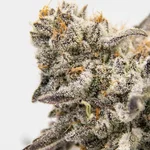The Current Legal Status of Marijuana
Marijuana has been a highly controversial substance since its criminalization in the early 20th century. However, in recent years, there has been a growing movement for its legalization for medical and recreational use. Currently, marijuana is legal for recreational use in 11 states and for medical use in 33 states. Despite this, marijuana remains illegal under federal law.
The History of Marijuana Criminalization
Marijuana was first criminalized in the United States in 1937 with the passage of the Marihuana Tax Act. This law imposed a tax on the sale, possession, or transfer of the substance and required individuals to register with the government to use or sell it legally. The law effectively made marijuana illegal, as complying with its requirements was difficult and expensive.
The criminalization of marijuana was largely driven by racial and cultural biases, as the substance was associated with Mexican immigrants and African American jazz musicians. These biases were perpetuated by sensationalized media reports that portrayed marijuana as a dangerous drug that caused violence and insanity.
The Push for Legalization
In recent years, there has been a growing movement for the legalization of marijuana. Proponents argue that marijuana has numerous medical benefits and that its criminalization has led to unjust and disproportionate incarceration rates for communities of color.
Additionally, many states have seen the economic benefits of legalizing marijuana, as it can generate significant tax revenue and create jobs in the legal cannabis industry.
The Impact of Marijuana Legalization on Youth Marijuana Use
One of the main concerns surrounding the legalization of marijuana is its potential impact on youth use. Opponents of legalization argue that making marijuana more readily available will lead to increased use among teenagers, which could have negative effects on their health and development.
The Evidence
Research on the impact of marijuana legalization on youth use is mixed. Some studies have found that legalization has led to increased use among teenagers, while others have found no significant impact.
A study published in the Journal of the American Medical Association found that marijuana use increased among teenagers in Washington state after legalization, but only in the short term. The study also found that legalization did not lead to an increase in marijuana-related problems, such as addiction or dependence.
On the other hand, a study published in the American Journal of Public Health found that legalization in Colorado led to an increase in youth marijuana use, particularly among 12 to 17-year-olds.
The Potential Risks
Despite the mixed evidence, there are potential risks associated with increased youth marijuana use. Marijuana use during adolescence has been linked to a range of negative outcomes, including impaired cognitive development, lower academic performance, and increased risk of mental health disorders.
Additionally, marijuana use during adolescence has been linked to an increased risk of substance use disorders later in life, as well as other substance use behaviors, such as smoking cigarettes and drinking alcohol.
The Relationship Between Marijuana, Alcohol, and Cigarette Use and Norms
It is important to consider the relationship between marijuana use and other substance use behaviors, such as alcohol and cigarette use. Understanding these relationships can provide insight into how legalization may impact overall substance use patterns.
The Evidence
Research has consistently found an association between marijuana use, alcohol use, and cigarette use. Individuals who use marijuana are more likely to use alcohol and cigarettes than those who do not use marijuana.
Additionally, there is evidence to suggest that the relationship between marijuana use and other substance use behaviors is bidirectional. That is, those who use alcohol and cigarettes are also more likely to use marijuana.
The Implications
The relationship between marijuana, alcohol, and cigarette use has important implications for the potential impact of legalization. If legalization leads to increased marijuana use, it could also lead to increased use of other substances. This could have negative consequences for public health, as alcohol and cigarette use are already major contributors to preventable deaths and illnesses.
Additionally, the normalization of marijuana use could lead to the normalization of other substance use behaviors, which could further exacerbate substance use problems in society.
Conclusion
Marijuana legalization remains a highly controversial topic, with arguments on both sides. While there is mixed evidence on the impact of legalization on youth use and overall substance use patterns, it is important to consider the potential risks and implications of legalization. As with any substance, it is important to approach marijuana use with caution and to make informed decisions about its use.












